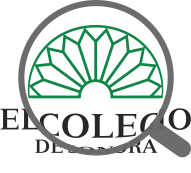Shuk Toak. Historia natural y cultural de un geosímbolo de Sonora
No Thumbnail Available
Date
2012-09-01
Authors
Garduño, Everardo
Tapia Landeros, Alberto
Caccavari, Eva
Journal Title
Journal ISSN
Volume Title
Publisher
El Colegio de Sonora
Abstract
In the northwestern corner of Sonora, México, there is an arid region covered by a volcanic shield that is close to both a complex of sand dunes and the Sea of Cortez. Here, temperatures can reach 56.7 °C in the summer and -8.3 °C during the winter. With only 52 millimeters of annual rain, one could assume that this is a lifeless wasteland. On the contrary, the Altar Desert and the El Pinacate volcanic shield have been characterized, since the Pleistocene Era, by the existence of a rich biodiversity of hundreds of species of fauna and flora which have adapted to current conditions.Therefore, the Mexican government declared it, in 1993, a protected natural area and named it El Pinacate BiosphereReserve andGreat DesertofAltar.Thisregionhas been historically relevant not only because of its physiographic and environmental singularities, but also because it has been inhabited by human beings since the Paleoindian and Late Prehistoric periods, and has repeatedly been explored since the 17th Century by missionaries, colonizers, gold seekers, hunters, and, most of all, scientists. This article presents both its natural and cultural histories, and discusses the geological, morphological and physiographic aspects of this reserve, its biodiversity, as well as its early settlement and subsequent exploration. This is the result of a research project aimed at developing a museum script which can become a permanent exhibition housed by the Shuk Toak Visitor Center.
En el noroeste del estado de Sonora existe una región árida cubierta por un escudo volcánico, cercana a un complejo de dunas y al mar de Cortez. Allí la temperatura puede alcanzar los 56.7°C en el verano, y descender hasta los -8.3°C en invierno. Con 52 milímetros de precipitación pluvial anual, podría pensarse que ese lugar es un páramo sin vida. No obstante, el desierto de Altar y el escudo volcánico de El Pinacate se han caracterizado, desde el pleistoceno, por la presencia de una rica biodiversidad, de la cual perduran cientos de especies de plantas y animales adaptados a las condiciones actuales; debido a ello, el gobierno mexicano declaró a esta zona área natural protegida, con la denominación de Reserva de la Biosfera El Pinacate y Gran Desierto de Altar. Esta región es relevante por sus particularidades fisiográficas y ambientales, por haber sido habitada por el hombre desde el periodo paleoindio y por las múltiples exploraciones de misioneros, colonizadores, gambusinos, cazadores y, sobre todo, de científicos, desde el siglo xvii hasta el presente. Este artículo presenta ambas historias, la natural y la cultural, y discute aspectos importantes de la geología, morfología y fisiografía de la zona, de su biodiversidad, así como de su poblamiento temprano y exploración posterior. Es el resultado de una investigación realizada con el propósito de generar un guión museográfico que se materialice en una exposición permanente albergada por el Centro de Visitantes Shuk Toak.
En el noroeste del estado de Sonora existe una región árida cubierta por un escudo volcánico, cercana a un complejo de dunas y al mar de Cortez. Allí la temperatura puede alcanzar los 56.7°C en el verano, y descender hasta los -8.3°C en invierno. Con 52 milímetros de precipitación pluvial anual, podría pensarse que ese lugar es un páramo sin vida. No obstante, el desierto de Altar y el escudo volcánico de El Pinacate se han caracterizado, desde el pleistoceno, por la presencia de una rica biodiversidad, de la cual perduran cientos de especies de plantas y animales adaptados a las condiciones actuales; debido a ello, el gobierno mexicano declaró a esta zona área natural protegida, con la denominación de Reserva de la Biosfera El Pinacate y Gran Desierto de Altar. Esta región es relevante por sus particularidades fisiográficas y ambientales, por haber sido habitada por el hombre desde el periodo paleoindio y por las múltiples exploraciones de misioneros, colonizadores, gambusinos, cazadores y, sobre todo, de científicos, desde el siglo xvii hasta el presente. Este artículo presenta ambas historias, la natural y la cultural, y discute aspectos importantes de la geología, morfología y fisiografía de la zona, de su biodiversidad, así como de su poblamiento temprano y exploración posterior. Es el resultado de una investigación realizada con el propósito de generar un guión museográfico que se materialice en una exposición permanente albergada por el Centro de Visitantes Shuk Toak.
Description
Keywords
Altar desert, El pinacate, Sonora, Arid areas, Biodiversity, Desert anthropology, Desierto de altar, El pinacate, Sonora, Zonas áridas, Biodiversidad, Antropología del desierto, Ciencias Sociales




